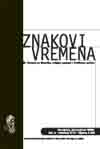Modeli uređenja odnosa između države i vjerskih zajednica u Evropi i SAD i njihove konsekvence
Models of the relationship between the state and religious communities in Europe and the USA, and their consequences
Author(s): Ahmet AlibašićSubject(s): Politics / Political Sciences
Published by: Naučnoistraživački institut »Ibn Sina«
Summary/Abstract: This article deals with the modalities of regulating the relationship between the state and religious communities in Europe and the United States of America and the consequences of these modalities for religious communities and for religion in general. Unlike the USA, the basic determinant of that relationship in the Old World is plurality of models with the almost complete absence of the liberal/secular, even though it was conceived in that part of the world, and a favouring of traditional religious communities with some tendencies towards the recognition of new religious groups. Also observable is the tendency for the state voluntarily to distance itself from the doctrinal and administrative affairs of religious communities. This phenomenon is in part explained by the transformation of religious communities from organized mass religious movements, posing a potential danger to the legitimacy of the state, to politically integrated, now much smaller interest groups with a moral agenda. In this connection it is noticeable that there is a much more rapid drop in the number of followers of the traditional religious communities in Europe than in the USA, which can also be explained somewhat paradoxically, but empirically corroborated, by the preferential position enjoyed by these communities in European states.
Journal: Znakovi vremena - Časopis za filozofiju, religiju, znanost i društvenu praksu
- Issue Year: 2000
- Issue No: 9-10
- Page Range: 140-158
- Page Count: 19
- Language: Bosnian

